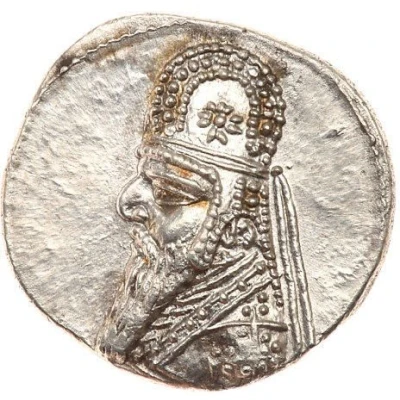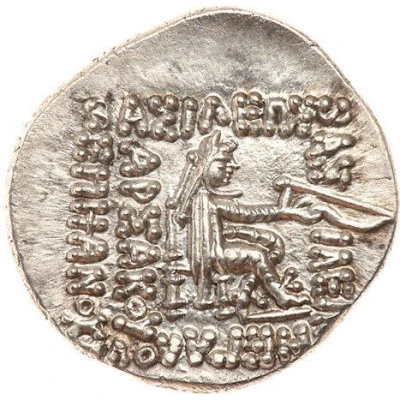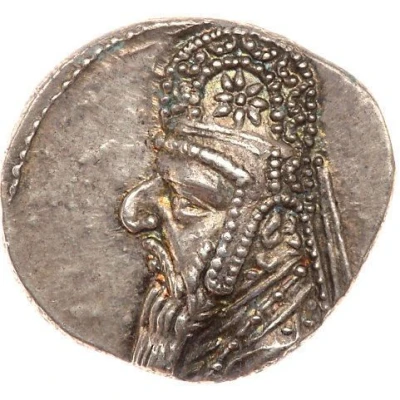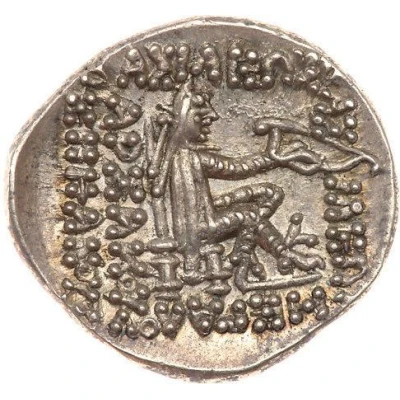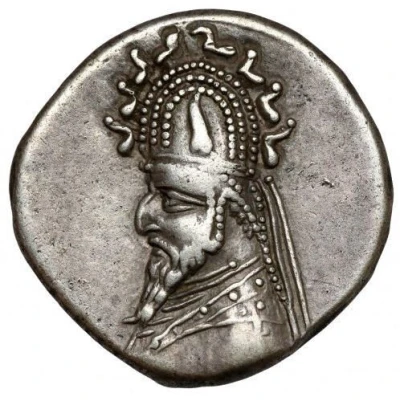
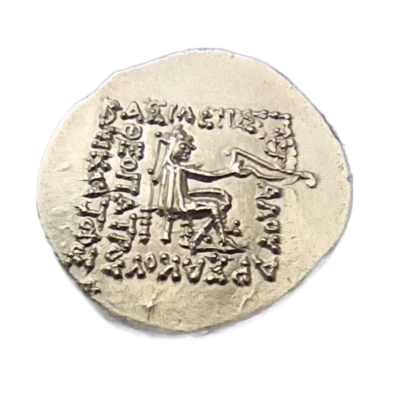

Obverse © Classical Numismatic Group, Inc. – Reverse © Parthian-Shoot (CC BY-NC-SA)
Drachm - Sanatruces I 95 BC - 68 BC
| Silver | 4.15 g | 20.5 mm |
| Issuer | Parthian Empire (Parthian Empire (247 BC - 224 AD)) |
|---|---|
| King | Sanatruces I (93 BC - 70 BC) |
| Type | Standard circulation coin |
| Years | 95 BC - 68 BC |
| Value | Drachm (1) |
| Currency | Drachm (247 BC-224 AD) |
| Composition | Silver |
| Weight | 4.15 g |
| Diameter | 20.5 mm |
| Shape | Round (irregular) |
| Technique | Hammered |
| Orientation | Medal alignment ↑↑ |
| Demonetized | Yes |
| Updated | 2024-10-10 |
| Numista | N#165385 |
|---|---|
| Rarity index | 90% |
Reverse
Archer (Arsakes I) seated right on throne, holding bow.
Script: Greek
Lettering: BAΣIΛEΩΣ MEΓAΛoY APΣAKoY ΘEoΠATPoY NIKAToPoΣ
Edge
Plain
Comment
This issue has traditionally been assigned to Gotarzes I, but has been reattributed to Sinatrukes by Assar. Two Nisa ostraca, Nos. 1760 and 307, reveal that Sinatrukes was the grandson of Phriapatius who in turn was son of the nephew of Arsakes I. Yet, the epithet ΘΕΟΠΑΤΩΡ on his S33 drachms implies that Sinatrukes must have been son of a deified king. If we take the text of a recently published ostracon, reading "King Arsaces, Great-Grandson of Arsaces," to be a reference to Mithradates I who, according to the titulature of the S16 drachms of Phraates II, had surely been deified around 128 BC, then Sinatrukes can only have been an adopted son of Mithradates I. The epithet NIKATΩP, "Victorious," on his drachms attest to a great triumph over Mithradates II. Even so, Sinatrukes was soon supplanted in Ekbatana and Rhagai by Gotarzes I, the immediate successor of Mithradates II, then expelled in 88/7 BC from Susa by Mithradates III, whereupon he sought refuge among the "Guti" until about 77 BC, when he made a fresh attempt at gaining the Parthian throne.The absence of both a clear reference to Sinatrukes in the extant Babylonian cuneiform material and tetradrachms from Seleukeia indicates that he never held Babylonia and had no access to its royal mint. With this in mind, we may safely assign S33 drachms to him, as this emission alone out of the fourteen different "Dark Age" types (S29-41 and S44) lacks parallel tetradrachms.
Interesting fact
One interesting fact about the Standard circulation coin Drachm - Sanatruces I (95 BC - 68 BC) from Parthian Empire (Parthian Empire (247 BC - 224 AD)) made of Silver weighing 4.15 g is that it features an image of the king, Sanatruces I, on one side and an image of the goddess Athena on the other. This coin was used as a means of currency and exchange during the Parthian Empire, which was a major power in the ancient Near East and beyond.
